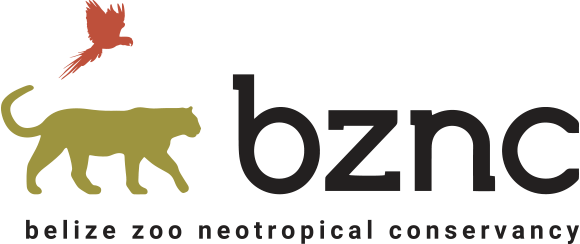The Belize Zoo and Tropical Education Center (BZTEC) is located 29 miles from Belize City along the George Price Highway in the Belize District, Belize.
The Zoo is set on 29 acres of tropical savanna and was founded in 1983 by Sharon Matola who is the current director. BZTEC is in the heart of the Central Belize Corridor a mosaic of public and lands that provides resources and living space for over 19 rural communities, as well as a broad diversity of wildlife species, including the jaguar.
There is a truly special place in this world, just off Mile Marker 29 on the Western Highway, Belize, Central America. This little section of forest is home to the animals of Belize, large and small: those that fly and those that swim, herbivores and carnivores, those that stalk and the stalked. Among them the jaguar, the puma, the tapir, the river otters and American crocodiles, the scarlet macaw and the toucan, the Jabiru stork and the majestic harpy eagle. The inhabitants having arrived injured or orphaned, or having come into conflict with humans who came to live among them, it is unlike any “zoo” in the world.
“The Belize Forest Department and their many partners, are continuing to put much effort into seeing that the Central Belize Wildlife Corridor (now the Maya Forest Corridor) maintains its integrity, supporting the conservation of the many plants and animals who call this vital landscape, home sweet home.”
The Belize Zoo has created a safe haven for many of the Central American Corridor's delicate native species.
What is the Belize Zoo?
It is home to 217 animals, representing 45 species that are all native to Belize. Several of these species are highly endangered/threatened: scarlet macaw, spider and howler monkeys, Central American tapir, jaguar, harpy eagle, Central American river turtle, and the white-lipped peccary. The animals at the zoo are orphaned, rescued, confiscated, born at the zoo, rehabilitating - no animals are acquired from the wild.
In 2018, 85,000 people visited the Zoo. Of these, about 40% were Belizeans of which 15,000 were students, teachers and parents.
Fifty-two Belizeans are employed at the Zoo.
The Zoo is the only nature destination in Belize that is fully accessible to visitors with physical disabilities
Looking for a great read?
Caring for orphaned animals at her own zoo in the tropical country of Belize, Sharon Matola became one of Central America’s greatest wildlife defenders. And when powerful outside forces conspired with the local government to build a dam that would flood the nesting ground of the only scarlet macaws in Belize, Matola was drawn into the fight of her life.
In The Last Flight of the Scarlet Macaw, award-winning author Bruce Barcott chronicles Sharon Matola’s inspiring crusade to stop a multinational corporation in its tracks. Ferocious in her passion, Matola and her confederates–a ragtag army of courageous locals and eccentric expatriates–endure slander and reprisals and take the fight to the courtroom and the boardroom, from local village streets to protests around the globe. Barcott explores the tension between environmental conservation and human development, puts a human face on the battle over globalization, and ultimately shows us how one unwavering woman risked her life to save the most beautiful bird in the world.
The book beautifully details the life of Pat, a jaguar born in the jungles of northern Belize. When Pat is injured, he turns to killing cattle and becomes a "problem jaguar." However, as the book so eloquently puts it, he is not a problem jaguar... But rather a jaguar with a problem. Thus begins the story of Pat's rescue, rehabilitation, and finally relocation as a foundation sire to the jaguar population in America. Along the way we learn about jaguars, the Mayan culture, the jungles of Belize, the conservation efforts of the Belize Zoo, and the amazing friendship Pat forms with the lady who worked with him.
This story does a great job of balancing the issues of conservation with the realities of the needs of the local human population and does it without being preachy either way. It really is a great story about a great cat.
What does the Zoo do:
The Belize Zoo and Tropical Education Center has three very important roles:
A Zoo that is developed around naturally existing vegetation where animals, found in Belize, can room in habitats similar to what they have in the wild. Zoo staff ensures a safe environment, behavioral enrichment, and proper diets.
A place where both Belizean and foreign students can learn and train about wildlife and conservation.
A staff that cares not only for animals and the places they live, but also for enriching the communities and schools in Belize about their precious natural resources and the long term conservation of habitats and wildlife.
How you can help:
The best way for you to help is to make a donation to help purchase much-needed equipment for the new Belize Zoo Vet Clinic and Commissary. Any amount you can give is greatly appreciated and will go towards improving and saving the lives of the Belize Zoo's animals.



